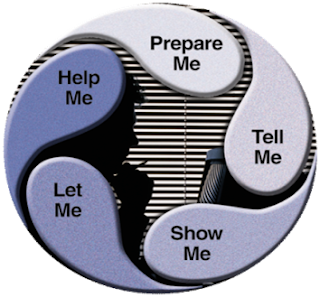
Change Management is one of the most forgotten and/or underserved components of most Business System Implementations these days.
Organizations still tend to focus on the technology and direct costs without sufficiently understanding the impacts on the business or the indirect costs of sufficiently facilitating the changes that are about to occur.
Change Management isn't just about training rather it's about taking a holistic view of providing the customers of the solution (i.e. the business) with the tools they need,through a multitude of channels, to do their job successfully.
When considering setting up a Change Management program for a business system implementation all of the following tools should be considered under the following general categories...
Prepare Me
- Staff Briefings - so they can ask questions
- Fact Sheets - so they can read and understand what's coming
- Road Shows - to make sure the message gets out to all the branches
Tell Me What I Need to Know
- Business Process Flows - As-Is and To-Be. Allow people to understand how their current processes changing
- Functional Workshops - To work through all the design issues
- Audience Impact Analysis - Understand how peoples roles will changes and their work loads will shift
Show Me what to Do
- Instructor Demonstrations - This is the classical in class training
- Instructor Guides - Capture the IP so that the training can easily be repeated
- Training Classes - Schedule a number of them so people can attend around business commitments
- Exercises - Give people the ability to do self learning at their pace
- Training Systems and Data - Give them an environment where they can try different things and make mistakes
Help Me
- Work Instructions - Detailed how-to guides
- Quick References - So they can look something up
- Online Support - Someone to call if they can't figure it out
- Cheat Sheets - so that they can easily refer to something
- Evaluations - so they have an idea of where there skill level is at
- Provide training that is Specific to their Business;
- Are Incremental in their structure so as not to bombard people with too much information too fast; and
- Are Continuous training is essential. Sending a person out to one course is not the way to go. Retention is best when the training is done over a period of time and their are frequent refreshers.
David
Goad is the Managing Director for eSavvy – Microsoft Dynamics
CRM Gold Certified Partner. eSavvy is an award
winning Microsoft
Dynamics CRM Partner staffed by some of the most experienced solution and
technical architects in the Microsoft partner channel. We build and deliver
relationship management solutions based on the Microsoft
Dynamics CRM platform for large enterprises as well small and midsize
businesses in Australia.



